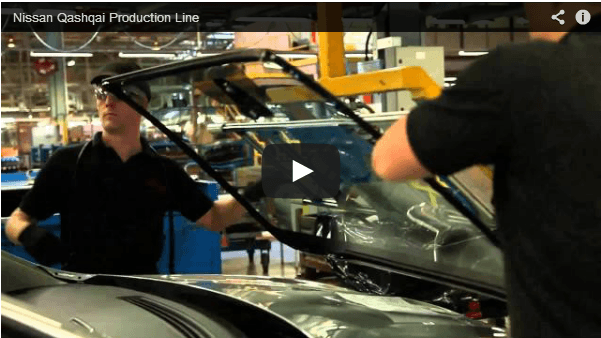One of the issues that arises when decoupling production, especially to a transcreation specialist, away from the creative agency (and I am using creative in the context of producing ideas and concepts so could include design, digital or advertising) there is a demarcation between the two processes. I have written previously on this with the thought that it should not be considered a continuum, but is actually two interlinked stages. In fact, the secret to separating these two processes is how you think about the actual process itself.
I have found that you can think about the development of advertising much like you would think about the development of an automobile. Much of the language for the two is very similar. There is consumer research, strategy, design, concept testing and then a prototype and more testing before specifications are developed and it goes into production.
Eliminating testing, the main steps in the process are:
- Strategy
- Concept / Design
- Prototype
- Specifications
- Manufacture / Production
Look familiar? This is very similar to how advertising moves through the process in response to the marketer’s brief. There is a communications strategy, concepts, quoting and then production.
But lets look at these steps more closely and see where collaboration and hand-over naturally occur.
Strategy
Like advertising, automotive manufacturers need to understand consumer trends. They are aware of the competitive strategies and market opportunities. There is a significant investment down the track and getting this right is important. With advertising, getting the content and message right is important otherwise the significant media investment is at risk too.
Concept / Design
The designer then develops sketches and drawings forming these into concepts much the same way as the agency creative do in response to the strategy. There can be several iterations that are explored or tested to find the best solution.
Prototype
The prototype brings the concept to reality and gives it shape and form. It is an expensive process, but an important one, to really understand the viability of the design and concept. In much the same way, in advertising this can be the comprehensive layouts and storyboards. It could be taking it further to animatics or even producing the one off execution of the concept. It depends on the requirements of the marketers and the capabilities of the transcreation company.
Specifications
While the automotive engineers are involved in the design, this is where the engineers take the lead in developing the specifications for the manufacture or production of the vehicle. It is also where the transcreation company, which has been privy to the strategy, concept and prototype, comes to the fore and leads the production specifications in consultation with the agency creatives and the marketers.
Manufacture / Production
When the vehicle goes into production, it is the engineers who oversee the output. Of course the designers may see the first one or two, but at this late stage it is more out of courtesy than need. Unless of course a problem or issue arises that requires a design rethink. But you would hope that as they roll off the production line most of these bugs have been well and truly ironed out. As the transcreation company begins to undertake translations and make culturally required changes to the concept expression, the agency creatives are consulted largely out of courtesy or if there is an issue.
What this provides is a natural transition between the concept design and the production process and that is the prototyping and the specifications. On one side the agency creative on the other the production team.
- The strategy and concept / design is agency led
- The prototyping the creatives lead in consultation with the production team
- The specifications the production team leads in consultation with the agency creatives
- The production is naturally production led
It provides a natural transition, with each party knowing their role and responsibility.
Interestingly, when you look at the way the automotive industry invests in the various stages of the process, the upfront is where they spend time and money making sure they get the design and concept right. Then in the specifications they look to achieve the economies of scale and the manufacturing efficiencies to reduce cost where possible and maximise return. This is the reverse of the way marketers currently invest with around one percent of marketing budget invested in concept development.
That is my prototype model for thinking about the advertising creative and production process.
What do you think? Is it useful? Can it be improved? Leave a comment and let me know.





4 thoughts on “A prototype model for the marketing communications process”
Hi Darren, like the thinking on this analogy. Without doubt a bigger spend up front is required (time and budget) so that the planning is done right and everybody buys in to what the end result is required to do. The idea of "Thrashing Early – Ref Seth Godin allows everybody to get their thoughts on the table, discussed and a cohesive approach decided. Once that is done, make everybody get out of the way and leave it to the production team to get it made and "shipped". The overall process should remove involved parties once they have completed their bit and signed off. Another analogy could be the software development industry where product is shipped on time as long as it is "good enough" without it being absolutely perfect. The ongoing process is to keep improving, refining and shipping. Often agencies (and clients) tend to think that once a campaign is in field that it is "over" and they push for the next brief. How about if everyone considered it as an ongoing process of refinement?
Arun, I think the software development process also has interesting benefits for marketers, because it allows you to test and learn and improve under real market conditions. This actually takes a lot more discipline and planning that the current campaign process that is simply a cyclical plan, development, implement and then start again. It also requires a effective feedback system to quickly learn and address where improvements can be made. This would work in the online platform where feedback is immediate through the likes of social media, and why it works with software, but few organisations or marketing departments are equipped or structured to work this way.
Insightful as ever Darren. I do feel that the more effective model, despite this being the uncommon methodology, is to swap steps 2 and 3 so that the production team drive the specifications and work creative within the boundaries of the parameters to create an execution that works for the time, budget, brand look/feel and design functionality. This is the current flaw in the system that means often a Rolls Royce ambition is forced into a Barina and missing the mark aesthitically, rather than creating a cool Mini together.
1. The strategy and concept / design is agency led
2. The specifications the production team leads in consultation with the agency creatives – specifications and execution figured out before making anything
3. The prototyping the creatives lead in consultation with the production team – we need a prototype for client approval as much as for ensuring we have the right model before mass production
4. The production is naturally production led – ie. roll out the agreed model
One clarification to my proposed model – the prototype is built to specifications as proof more so than as a development phase. The specifications can be determined in virtual space, planning and designing stage to production's interpretation of the parameters. Building a prototype that can't be produced within budget etc is a wasted cost and changes to it at that point are very expensive too. That may not be quite how the auto industry see it but that is how it comes out in the advertising space and where I think clients are ultimately paying the price at present.
Comments are closed.